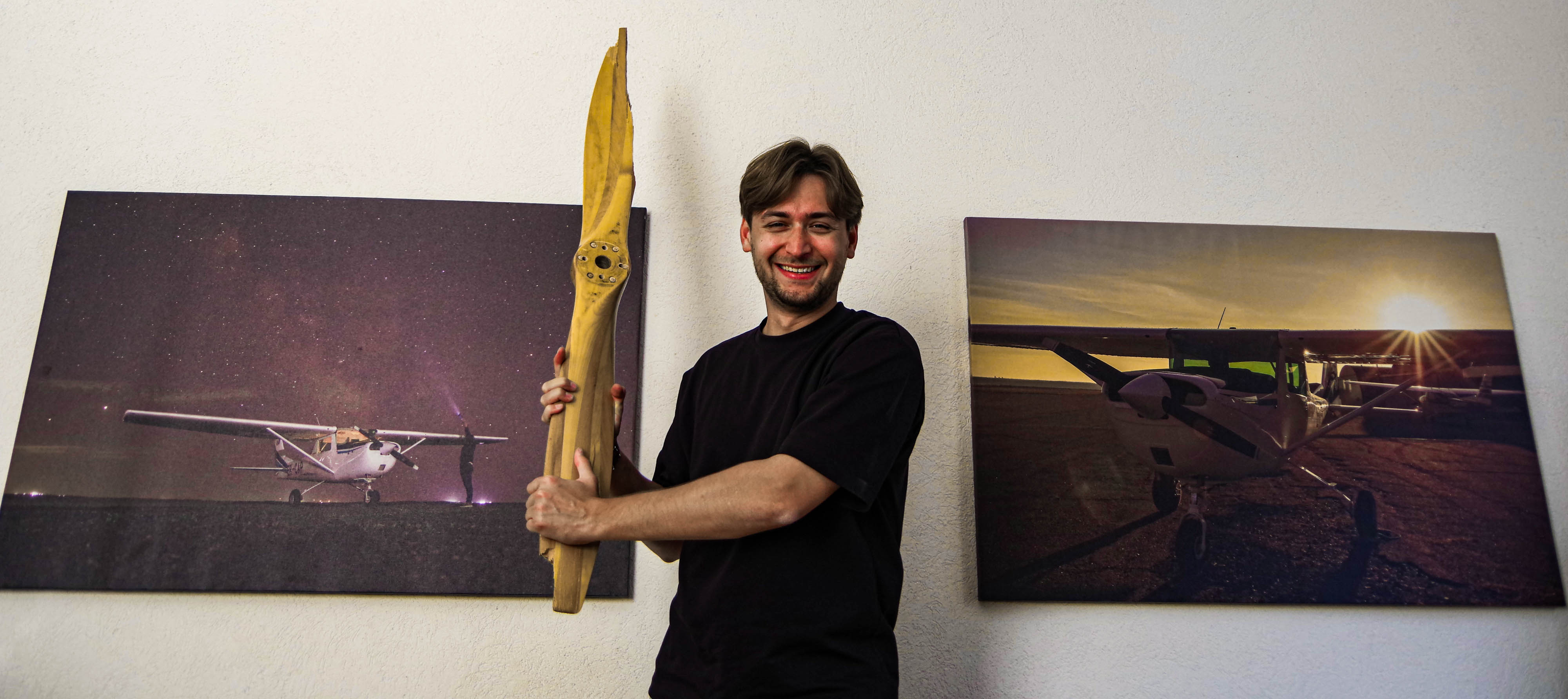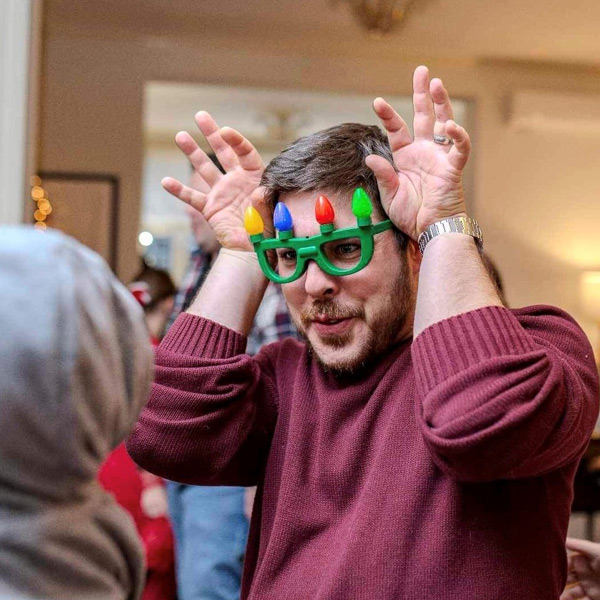Aviation, post-Soviet style
Lone flight school's owner, students dream big
We deployed flaps and circled to final toward the grass strip near Romania’s border with Moldova. It was a steep approach, but there really wasn’t time to waste: We had to get across the border checkpoint before the weekend crowd jammed up the lines for hours.
Russu, 27, owns Altitude Aviation, the only flight school currently operating in Moldova, a small country sandwiched between European Union member state Romania and war-torn Ukraine. I am a native of Colorado who lives here with barely enough language skills to order a coffee, and I am one of his students.
Click images to expand and view captions.





“There are only about 50, give or take, [active] licensed private pilots in Moldova,” Russu explained. General aviation has not flourished in this country known for widespread government corruption, bribes, and nepotism within the structures of power.
Another student pilot at the flight school, Roman Tostagan, smoked a cigarette outside the Charlie Hut at Vadul lui Vodă Airfield (LUKV), one of only three certified airfields in the country besides Chisinau International Airport (LUKK).
“It’s impossible to get a license here in Moldova.”
Tostagan was referring to the Kafkaesque maze of bureaucracy Moldova is famous for. “Unless you have a family member or friend that works in the business.”
The airfield’s two wide grass runways intersect on top of a hill that gives you a million-Moldovan-lei view of the countryside. The air club that operates it has Quonset hangars, a restaurant that operates during events, and an Antonov AN–2 parked as a showpiece and parts-bin for the adjacent skydiving company, which uses a working AN–2 to (very slowly) ferry its jumpers up to 10,000 feet.





“The most recent pilot to get a license in Moldova was license number 87,” Russu explains. Moldova gained its independence in 1991, and has issued all of 87 pilot licenses in the two decades since (following the European practice of issuing licenses, not certificates). This country really hasn’t experienced the boom in private aviation other post-Soviet countries have benefited from.
“There are also no private pilots from our country that haven’t flown in my two planes, either,” Russu continued. Russu owns a pair of Reims F150s, a variant of the Cessna 150 that was manufactured by Reims Aviation Industries in France in the late 1960s, that he uses for flight training. Operating aircraft, owning a company, and maintaining a good reputation with the authorities is a juggler’s dream job, not something for the faint of heart.
Let me tell you a little about Moldova:
If you picture the landscape of Kentucky or western Pennsylvania, but with more horse-driven carts, and more statues of Lenin, you get a mental picture of Moldova. After living here for three years I have begun to understand the dichotomy and polarity that undergird a country with a history of conquest and a present marked by broad mistrust of government that works against progress the way drag works against propulsion.
Beyond bureaucracy and corruption, Moldova is also known for its wine (delicious), and for hosting the largest underground wine cellar in the world (again, the wine is delicious).
Many Moldovan expats are said to be working as truck drivers in the United States. (I could not verify this, but my neighbor in our block of flats insisted that it’s true.) I have personally seen a bus stop with a tile mosaic featuring Yuri Gagarin conquering space.
Large napkins don’t exist at restaurants.
Moldovans speak Romanian (fiercely contested) and Russian (also fiercely contested). There was a scandal a few years back where a few oligarchs stole $1 billion from the banking system, and one of the alleged perpetrators is reported to be living in exile in Israel (and is backed by Russian President Vladimir Putin).
Moldova is one of the poorest countries in Europe. It has a pro-EU leader, President Maia Sandu, who is trying, in the face of numerous pro-Russian destabilizing factions, to bring Moldova into modern Europe and the world.
Moldova and Belarus are where you’ll find the last living vestiges of the former Soviet Union outside of Russia itself.
And yet, as Russu explained, Moldova has 50, “give or take,” private pilots registered. With a certain understatement and a wan look, he says, “Our system is complete chaos and mess.” Flying around here is a question of who you know and how you know them (and you better speak the language!). The significant contrast between Moldova and the United States—Russu calls it a “parallel universe in aviation”—is mirrored elsewhere in society.
At the state-run hospitals, it’s not uncommon (read: required) to slip the doctor $20 or so as a “tip” to receive care. Those state physicians make less than $1,000 per month.
With all this negativity surrounding Moldova, not to mention the war next door, it’s easy to put on a Slavic frown and just carry on the best you can, which is what people do. There is also the perennial unresolved problem of Moldova having its own breakaway state—Transnistria—within its borders.
I’m told by Russu that it’s quite possible to come under small arms fire directed toward your aircraft if you accidentally fly across the Dniester River into territory under Russia’s de-facto control—if not visibly marked as such.
I’ve been there, and I believe him. Armored personnel carriers can be seen at every checkpoint, with no shortage of military-uniformed, Russian-speaking, AK-toting soldiers to remind you that you’re in a different world.




However, for all the pitfalls, there are student pilots who show hope for a less-bleak GA future. Vladislav Russu (no relation to Mihai), 17, is an aspiring airline pilot who is taking lessons at Altitude Aviation.
He’s about 18 hours into his training, having finished his coursework, and at Vadul lui Vodă’s briefing chalet, talks about his third solo.
It began with his instructor, practicing chandelles and lazy 8s, before he was turned loose. It was a warm day, about 90 degrees Fahrenheit by noon, with updrafts and downdrafts over the nearby river and fields. It was bumpy for his third solo, and while shifting his feet he paused briefly before offering the assured response of many student pilots after experiencing turbulence: “No big deal.”
“Flying makes you more focused, more precise,” the teenage student continued. He wants to stay in Moldova and work here for a local airline. “In general, people here are kind and welcoming.”
Vladislav Russu’s father works in the upper echelons of FlyOne, the Moldovan low-cost carrier that his son dreams of flying for. The other low-cost carrier, HiSky, is the main competitor, with the cash-strapped national airline Air Moldova suspending flights in May.
“Pilots get paid well, they get to travel, they get to see the world,” Russu said. For noncommercial pilots in Moldova, this might not be the case. Because the country doesn’t benefit from EASA membership, and is not yet in the EU, flying outside the boundaries of airspace the size of Maryland can present problems…if, again, you might not know the right wheels to grease.
“The people at the CAA know me well, we have no problems,” Mihai Russu says after a conversation about the dysfunction of a regulatory agency still rooted in decades past. At the entrance to the international airport, a Tupolev Tu-134 is on display somewhat ironically showcasing that connection.
Calling into the planning office and filing a flight plan in the almost-countrywide Class C airspace requires patience and grace, since most of the controllers go with their own style and set of rules. You’ll have to pick up a squawk even in unregulated Class G. That’s just how Moldova rolls.
It’s a tight community.
Mihai Russu is certainly looking to expand that community. His AOPA-affiliated flight school is back up and running since back-to-back catastrophes—the COVID-19 pandemic and the Ukraine war that shut down all of Moldova’s airspace for months—threatened to end his dream.
His ultimate goal, much like that of his young student pilot, is to build Moldovan aviation from within. He strives to grow his aviation business and branch out into commercial aviation. “Either go hard or go home,” he said.
“My biggest fear is to fail. I’m a perfectionist,” he told me on a video chat while taking his first tour of the United States, where he experienced his first EAA AirVenture Oshkosh in Wisconsin. “You have to look the part, and act the part.”
“I’ve been able to experience things in aviation most people don’t, and might not ever,“ Russu said. If his students are a bellwether to this sentiment, the state of aviation in Moldova might climb beyond the ties that bind it to the country’s past.









